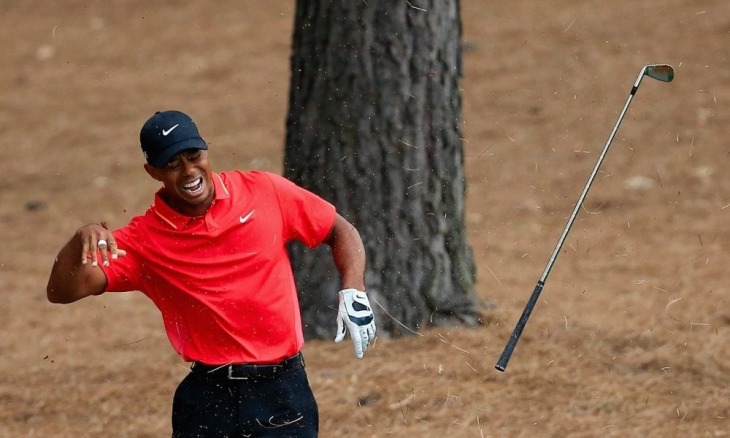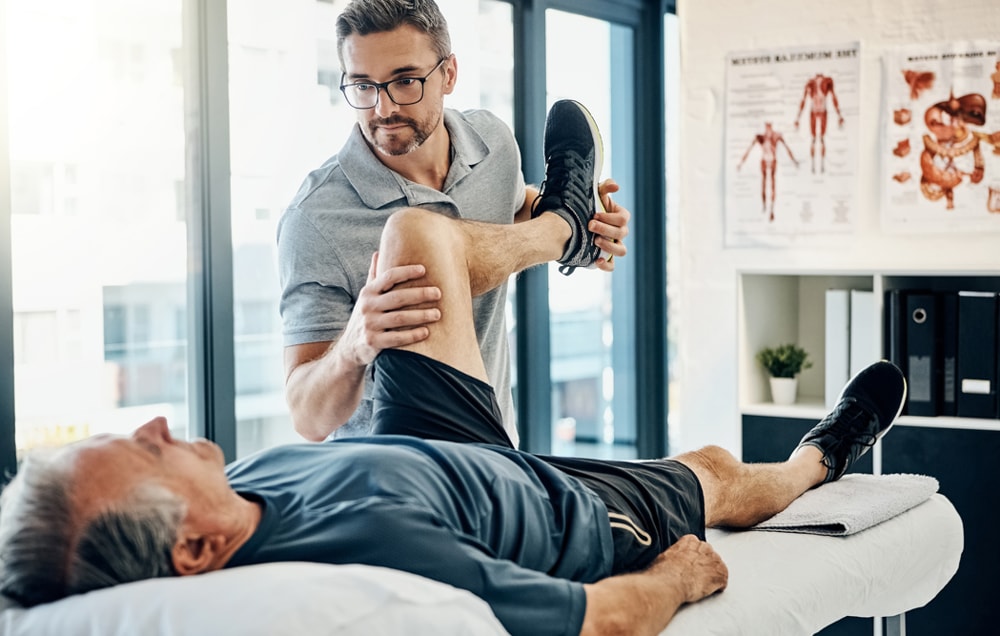
Golf is a sport that, at first glance, appears to be low-risk when it comes to injuries. Unlike contact sports such as football or rugby, golf doesn’t involve physical collisions or high-speed movements. However, what many don’t realize is that golf can lead to a variety of injuries, particularly those related to repetitive motions, improper technique, and lack of physical preparation. At Blackiron, we understand the importance of keeping our golfers in top shape, which is why it’s essential to know how injuries occur, what the most common ones are, and, most importantly, how to prevent them.
Why do golf injuries occur?
The golf swing, which seems like a controlled and smooth movement, engages a large number of muscles, joints, and tendons working together. From the moment the golfer takes their initial stance until the completion of the swing, the body performs a series of explosive movements that can place significant stress on the musculoskeletal system.
Additionally, as golf involves repetitive movements, overuse of certain muscle groups and improper technique can lead to injuries over time. Repeated ball striking and incorrect posture can cause micro-injuries that, if not properly addressed, can develop into chronic issues.
Most common golf injuries
1. Lower back pain (Lumbago)
The lower back is one of the most affected areas in golfers. This is due to the rotation and twisting of the spine during the swing. When the technique is incorrect, stress on the lumbar spine increases, which can lead to pain, muscle spasms, and even more serious problems such as herniated discs.
2. Golfer’s elbow (Medial epicondylitis)
Medial epicondylitis, also known as “golfer’s elbow,” is a common injury that affects the tendons in the elbow. It occurs when the muscles in the forearm that allow wrist flexion become inflamed or torn due to overuse or improper technique. The pain is located on the inner side of the elbow and can radiate down the forearm and into the wrist.
3. Shoulder injuries
The golf swing also requires considerable mobility and strength in the shoulders. Injuries in this area often involve the rotator cuff, a group of muscles and tendons that stabilize the shoulder joint. Sudden or repetitive movements can lead to tendinitis or, in more severe cases, tears.
4. Wrist and hand injuries
The wrist bears a significant amount of load during ball impact, especially if the hit isn’t clean or the club strikes the ground. This can cause sprains, strains, and even minor fractures in the bones of the hand and wrist.
5. Knee injuries
Although the knees aren’t as directly involved in the swing, the body’s rotation and twisting during the turn can affect the knee joints, particularly if the golfer is predisposed to joint issues. Meniscus injuries or ligament strains are relatively common.
Causes of golf injuries
There are several reasons why these injuries are common in golf:
Improper technique: A poorly executed swing or incorrect posture when hitting the ball increases the risk of injury. Small deviations in technique can create significant stress on the joints and muscles over time.
Overuse: Repeating the same movement over and over without adequate rest can cause wear and tear on muscles and tendons. This is one of the main culprits of overuse injuries, such as golfer’s elbow.
Lack of warm-up: Golf may seem like a calm sport, but it involves explosive movements that require muscles and joints to be well-prepared. Skipping warm-ups or not doing proper stretches can predispose the body to injury.
Poor physical condition: While golf doesn’t demand the same level of fitness as more intense sports, good physical condition is crucial. Strengthening the core, back, and shoulders is essential for executing a controlled swing and preventing injuries.
How to prevent golf injuries
At Blackiron, we believe prevention is the best medicine. Here are some key strategies to keep you healthy on the golf course:
1. Improve your technique
Proper technique is the foundation for preventing injuries. Working with a qualified coach at Blackiron can help you adjust your posture, improve your swing, and reduce unnecessary strain on your body. Make sure you understand the basics to develop a safe and correct technique.
2. Physical strengthening
Performing golf-specific strengthening exercises is essential to protect your body. Focus on exercises that work the core (abdomen, lower back, and glutes), upper body (shoulders and arms), and legs. A strong and flexible body can better absorb the impact and rotations of the swing.
3. Warm-up routine
Warming up is crucial to prepare the body before playing golf, as it increases blood flow to the muscles, improves flexibility, and reduces the risk of injury. It helps the joints and muscles work more efficiently during the swing, preventing strains or overloads. Additionally, a good warm-up enhances your range of motion, optimizing performance with each stroke. Without proper preparation, the body is more susceptible to injury, especially in areas prone to stress, as we’ve discussed.
4. Adequate rest
Give your body time to recover. If you play frequently, make sure to alternate between intensive practice days and days of rest or low-impact training. Overuse without rest is one of the main causes of chronic injuries.
5. Proper equipment use
Playing with clubs that don’t fit your size or strength can increase the risk of injury. Make sure your equipment is custom-fitted or adjusted to your physical needs and playing style. Proper footwear is also crucial to avoid balance and stability issues.
Treatment and rehabilitation
If you experience an injury despite preventive measures, it’s essential to treat it immediately. The RICE method (rest, ice, compression, and elevation) is a simple but effective technique for treating minor injuries like sprains and strains. For more severe injuries, such as tendinitis or tears, physical therapy is a key tool for recovery.
Don’t hesitate to consult a doctor or physical therapist if you experience persistent pain or inflammation. Ignoring a minor injury can lead to chronic problems that will keep you off the golf course for longer.

Psychological aspects of golf injuries
Injuries affect not only the body but also the mind. Many golfers experience frustration, anxiety, or even depression when forced to pause their game. At Blackiron, we help our golfers maintain a positive mindset throughout the recovery process, reminding them that they will come back stronger if they follow the proper treatment and rehabilitation plan.
In summary, golf injuries are more common than many people think, but with the right technique, proper strengthening, and a preventive approach, it’s possible to minimize their occurrence. At Blackiron, we are committed to helping our students play to the best of their abilities without compromising their health.
At Blackiron, we strive to identify risk factors and track the acute and/or chronic stress exerted on specific tissues. To do this, we consider all influential factors, some of which include the athlete’s internal load and fatigue, which we assess using a subjective perception scale, as well as external load and exercise selection, aiming to individualize the approach as much as possible.
Stay informed, train smart, and enjoy golf without interruptions. Your body and your health will thank you!